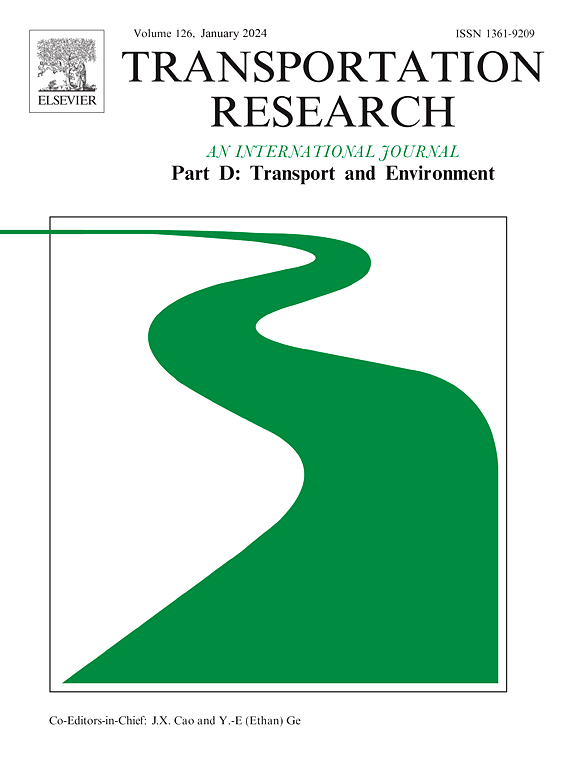Building-related electric vehicle charging behaviors and energy consumption patterns: An urban-scale analysis
IF 7.3
1区 工程技术
Q1 ENVIRONMENTAL STUDIES
Transportation Research Part D-transport and Environment
Pub Date : 2025-02-18
DOI:10.1016/j.trd.2025.104663
引用次数: 0
Abstract
Understanding electric vehicle (EV) charging behavior and energy consumption patterns is fundamental to support the transportation electrification trend. We analyzed a dataset of 2,385,173 charging sessions from 2,719 chargers across 158 stations in Beijing, China. First, the charging sessions of alternating-current slow chargers (ACSCs) are mainly affected by parking behavior related to adjacent buildings; conversely, the charging sessions of direct-current fast chargers (DCFCs) cater to urgent charging demands. Second, adjacent building type and public accessibility significantly impact a station’s charging power profile. Public station profiles can be quantified by combining private and independent station profiles. Third, the impact of charger rated power on utilization rate varies by station type. The charger utilization rate increases with its rated power at independent and commercial stations, but decreases at workplace and residential stations. This study reveals the inherent behavioral and energy-use relationship between EVs and buildings, providing guidance for charging infrastructure planning.

与建筑相关的电动汽车充电行为与能源消耗模式:城市尺度分析
了解电动汽车的充电行为和能源消耗模式是支持交通电气化趋势的基础。我们分析了中国北京158个充电站的2719个充电器的2385173个充电时段的数据集。首先,交流慢速充电器的充电时段主要受与相邻建筑相关的停车行为的影响;相反,直流快速充电器(DCFCs)的充电时段满足了紧急充电需求。其次,邻近的建筑类型和公共可达性显著影响充电站的充电功率分布。公共站点概况可以通过结合私有站点和独立站点概况来量化。第三,充电器额定功率对利用率的影响因站型而异。在独立站和商用站,充电器的利用率随着额定功率的增加而增加,而在工作场所和居民站,充电器的利用率则降低。该研究揭示了电动汽车与建筑之间固有的行为和能源使用关系,为充电基础设施规划提供指导。
本文章由计算机程序翻译,如有差异,请以英文原文为准。
求助全文
约1分钟内获得全文
求助全文
来源期刊
CiteScore
14.40
自引率
9.20%
发文量
314
审稿时长
39 days
期刊介绍:
Transportation Research Part D: Transport and Environment focuses on original research exploring the environmental impacts of transportation, policy responses to these impacts, and their implications for transportation system design, planning, and management. The journal comprehensively covers the interaction between transportation and the environment, ranging from local effects on specific geographical areas to global implications such as natural resource depletion and atmospheric pollution.
We welcome research papers across all transportation modes, including maritime, air, and land transportation, assessing their environmental impacts broadly. Papers addressing both mobile aspects and transportation infrastructure are considered. The journal prioritizes empirical findings and policy responses of regulatory, planning, technical, or fiscal nature. Articles are policy-driven, accessible, and applicable to readers from diverse disciplines, emphasizing relevance and practicality. We encourage interdisciplinary submissions and welcome contributions from economically developing and advanced countries alike, reflecting our international orientation.

 求助内容:
求助内容: 应助结果提醒方式:
应助结果提醒方式:


